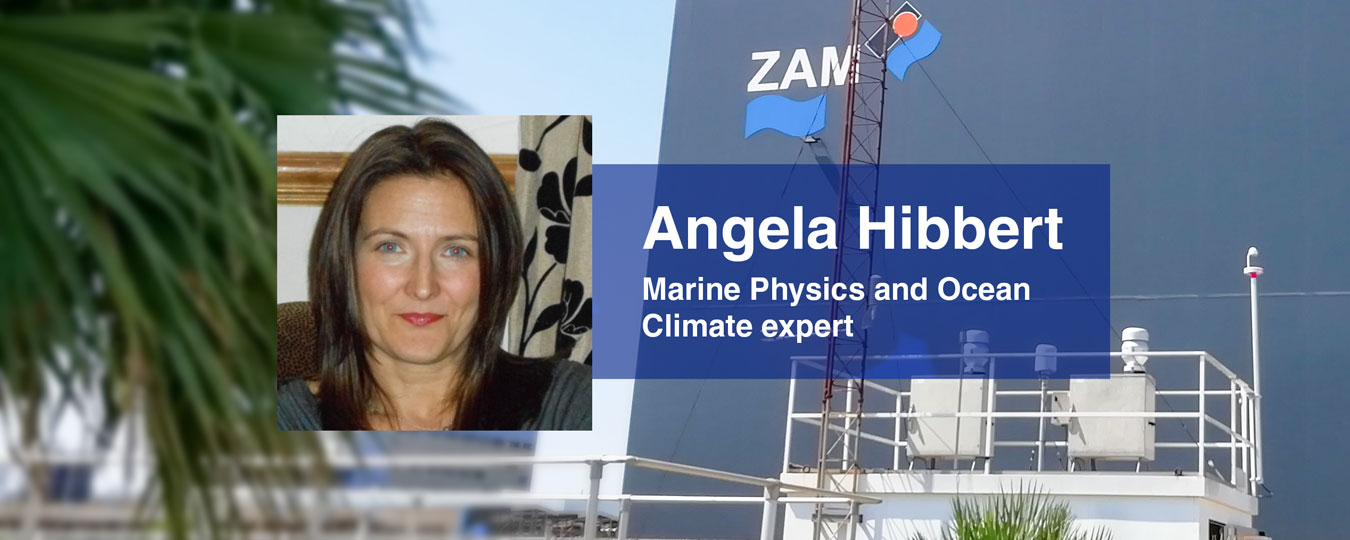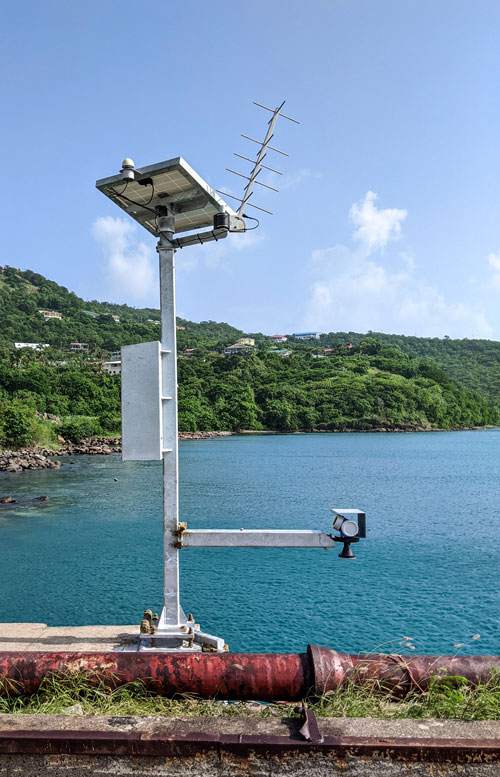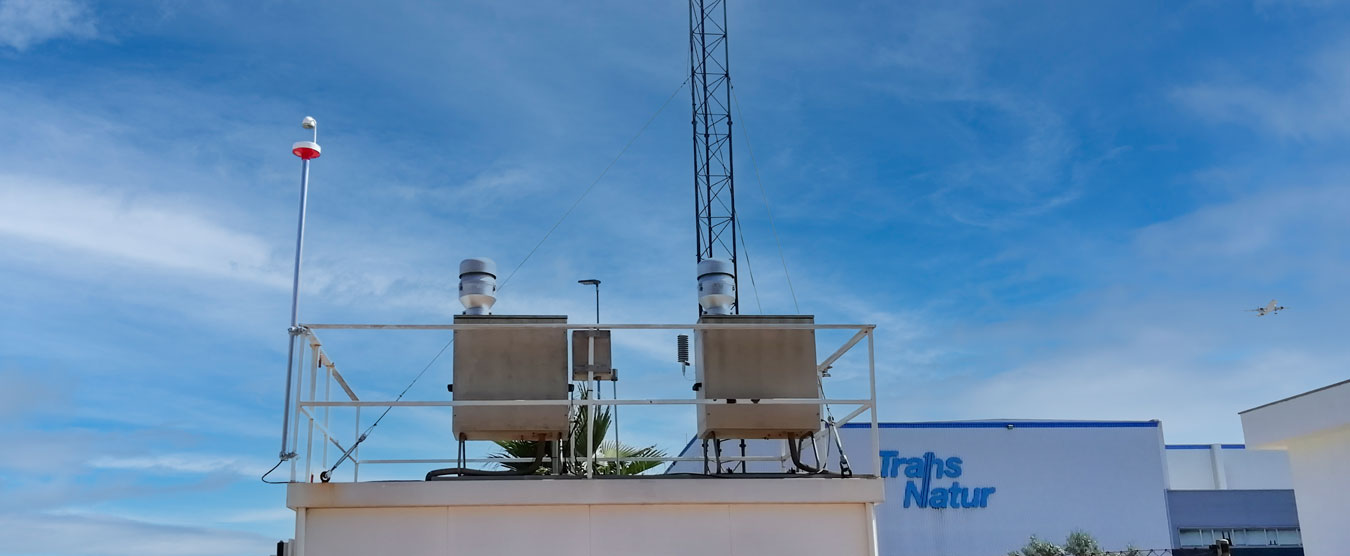She is working as Head of Sea Level and Ocean Climate at the National Oceanography Centre (NOC) in United Kingdom.

She is a Marine Physics and Ocean Climate expert working as Head of Sea Level and Ocean Climate at the National Oceanography Centre (NOC) in United Kingdom.
A Tidal and Sea Level Scientist, Angela is an expert in the management and operational use of sea level monitoring technology and the scientific applications of sea level data.
At present, Angela is Principle Investigator for the South Atlantic Tide Gauge Network, the EuroSea Project Tide Gauge Development, the UK Tide Gauge Prototype Project, and is Co-Chair of the Tide Gauges Task Team of the European Global Ocean Observing System (EuroGOOS).
The EuroSea Project, in which INGESCO has collaborated through the installation of the Previstorm Thunderstorm Warning System in Barcelona’s Harbour, works to improve the European ocean observing and forecasting system in a global context, delivering ocean observations and forecasts to advance scientific knowledge about ocean climate, marine ecosystems and their vulnerability to human impacts and to demonstrate the importance of the ocean to an economically viable and healthy society.
Let’s know a little more about Angela and about EuroSea Project.
When did your interest in the Seas and Oceans start?
I had worked as a bank manager for Barclays PLC for over a decade and I decided that I was ready for a change of career, so in 2001 I completed an Open University course in Natural Sciences. I enjoyed it so much that in 2003 I decided to study for a BSc in Oceans, Climate and Physical Geography at the University of Liverpool and I graduated in 2006.
How did you become a Tidal and Sea Level Scientist and why?
As part of my degree course, I enjoyed learning about tides and sea level variability, so when I saw a PhD advertised in that subject at the University of Liverpool, I leapt at the chance and applied straightaway. I was successful and in 2010, I completed my thesis entitled ‘ High Latitude Atmosphere-Ocean Coupling in Sea Level Records’.
When did you start working for the NOC?
I started working for NOC in 2009 whilst I was still completing my PhD. The timing wasn’t ideal, but NOC was advertising for a Tidal Scientist and these roles don’t come up very often, so I didn’t want to miss out on the opportunity. The first year was really challenging, trying to combine studying with working full-time, but it was worth it.
Which has been the most memorable project you’ve participated in?
In 2015, the UK Government launched the Commonwealth Marine Economies Programme which aimed to support Small Island Developing States in the Caribbean, Pacific and Indian Oceans to develop their blue economy in partnership with key organisations like NOC. I led a few projects to install sea level monitoring equipment in places like St Lucia, Belize and Dominica and co-hosted training courses to help local staff maintain the equipment and use the data. It was really exciting being a part of such a sustained effort to develop monitoring capability in the Caribbean and I am still committed to working with colleagues there.
Can you explain a little bit what is EuroSea and the main objectives of the project? Expected impacts?
The EuroSea project is funded by the European Commission’s Horizon 2020 research programme and it aims to bring together key European experts in ocean observing and forecasting to deliver oceanographic products and services that are designed to meet the needs of users. I am working alongside other project partners to deliver innovative sea level monitoring and forecasting systems known as the Coastal Resilience and Operational Services Demonstrator that can be used by port operators, planning authorities and local governments. Some of this work builds upon the technology developments that NOC made in the Caribbean where we producing sea level monitoring systems that were suitable for monitoring storms surges and tsunamis. In EuroSea, we aim to produce multi-hazard monitoring systems that can be used for these purposes, but which are also suitable for monitoring long term trends associated with climate change, as well as other parameters. We are also using renewable power and low-cost telemetry systems to make the systems as low maintenance as possible.
Which are the institutions involved in the project?
The Eurosea Consortium has 55 partners and is coordinated by the GEOMAR Helmholtz Centre for Ocean Research in Kiel. The Coastal Resilience and Operational Services Demonstrator work is jointly led by the NOC and Puertos del Estado. For this work, our other project partners include ARUP, NoLogin, University of Cambridge, University of Catalunya and the Centro Euro-Mediterraneo sui Cambiamenti Climatic, but there are other organisations sub-contracted to the project partners too, such as Ingesco, and of course there are our users and stakeholders such as port authorities and government agencies.

Duration? Countries and harbours involved?
EuroSea is a 4-year project that involves many European countries as well as a few partners from further afield. The primary focus of the Coastal Resilience and Operational Services Demonstrator is in the Mediterranean Sea, especially the ports of Barcelona and Taranto, but some work focuses upon the Humber Estuary in the UK and the west coast of Colombia.
Being and European project, does it have connections with other international projects with similar goals and objectives?
EuroSea is the sister project of Blue-Cloud, which is another European Union projectthat aims to deliver a virtual platform for marine science collaboration. The cyber platform will have access to data repositories, analytical tools, and computing facilities to explore and demonstrate the potential of cloud-based open science. EuroSea builds upon years of collaboration building a European Ocean Observing System, for example the activities of the EuroSea observing networks rely on the EuroGOOS Task Teams for the European networks of Tide Gauges, Gliders and other technologies.
Glasgow has held the Climate Change Conference 2021. Debates have been conducted to try to slow down the climate change and its effects. Which are the effects of the climate change that are affecting directly to the seas and oceans?
There are many ocean processes that are affected by climate change, but for me, as a sea level scientist, some key impacts of a warmer climate will be thermal expansion of the ocean and the melting of land-based ice, such as glaciers and ice-sheets, both of which will lead to increased sea levels. If mean sea level is higher, storm surges and high tides are more likely to cause coastal flooding, which is a major concern for me. Besides sea level rise, climate change can also alter ocean temperature and salinity, changing circulation patterns and there are also risks of ocean acidification and reduced biodiversity, as well as other impacts.
Under your opinion, what would be the most urgent and necessary actions to be taken to protect our seas and the global Ocean?
I think it is important for everyone to take personal responsibility for the environment and make whatever lifestyle changes they can to reduce greenhouse gas emissions, marine plastics and pollution.
Barcelona is one of the cities participating in the EuroSea project, what is its role in it?
Barcelona will be one of the ports in which we will install state-of-the-art sea level monitoring and forecasting systems. Instruments in the harbour will monitor tides, waves, air pressure and long-term changes in sea level and will transmit these data in near real time, for early warning purposes. At the same time, a suite of models will be used to forecast atmospheric and coastal conditions. Both the observations and the forecasts will be made available via purpose-built software, giving port operators advance warning of deteriorating conditions and enabling them to monitor how the situation develops.
The Previstorm TWS is participating in the project. How started the idea of the installation a Thunderstorm Warning System?
The port of Barcelona hosts a large oil terminal that has a storage capacity for over 450, 000 m3 of oil, but lightning strikes can be a serious hazard to the operations of the terminal. Our delivery partners at Puertos del Estado had identified the need for some sort of warning system through their discussions with the port authority. They suggested that the Ingesco Previstorm TWS would be ideal as it would give sufficient advance warning of a lightning strike to allow the oil terminal to temporarily shut down their operations in the interests of safety.

